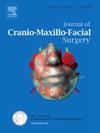调查头颈部基底细胞癌和皮肤鳞状细胞癌切除手术成功的决定因素:单中心回顾性分析
IF 2.1
2区 医学
Q2 DENTISTRY, ORAL SURGERY & MEDICINE
引用次数: 0
摘要
本研究旨在确定影响头颈部基底细胞癌(BCC)、皮肤鳞状细胞癌(SCC)和皮肤原位癌(CIS)的初次切除和再次切除完整性的因素。我们进行了一项回顾性单中心分析,涵盖了2015年至2022年间记录的1513例皮肤肿瘤。该数据集包括1108例初次切除术和405例再次切除术,所有病例均为头颈部BCC、SCC和CIS的组织学验证病例。考虑到患者的性别和年龄、肿瘤定位、术前皮肤肿瘤诊断的怀疑或组织学证实、外科医生的培训水平以及放大镜的使用等变量,进行了相关性分析。主要目的是评估这些因素对皮肤肿瘤初诊和复诊手术完整性的影响。分析结果显示,BCC 的定位与初诊切除的完整性之间存在明显的相关性。具体来说,鼻部和耳部的切除不彻底率(R1)明显较高,而面颊部的 R1 率则大大降低。放大镜的使用与原发性 BCC 切除的完整性呈正相关。然而,对于BCC再切除术以及原发和再切除的皮肤鳞状细胞癌(SCC)和原位癌(CIS)合并组,没有发现明显的影响因素。肿瘤实体和定位是影响皮肤肿瘤切除完整性的关键因素,特定解剖部位的手术不完整率各不相同。值得注意的是,放大镜的使用与切除不彻底率、再次切除率和后续手术率的降低呈显著正相关,这表明放大镜有望成为提高手术精确度和优化手术效果的重要工具。本文章由计算机程序翻译,如有差异,请以英文原文为准。
Investigating determinants of surgical success in excising basal cell and cutaneous squamous cell carcinomas of the head and neck: A single-center retrospective analysis
This study aimed to identify factors influencing the completeness of primary and re-excision of basal cell carcinoma (BCC), cutaneous squamous cell carcinoma (SCC), and cutaneous carcinoma in situ (CIS) of the head and neck. A retrospective single-center analysis was conducted, encompassing 1513 instances of cutaneous tumors recorded between 2015 and 2022. This dataset comprised 1108 primary excisions and 405 re-excisions, all of which were histologically verified cases of BCC, SCC, and CIS located within the head and neck region. Correlation analyses were performed, considering variables such as patients' gender and age, tumor localization, preoperative suspicion or histological confirmation of skin tumor diagnosis, surgeons’ levels of training, and the utilization of magnifying glasses. The primary objective was to assess the impact of these factors on the completeness of both primary and re-excisions of skin tumors. The analysis revealed a significant correlation between the localization of BCC and the completeness of primary excision. Specifically, the nose and ear exhibited a significantly higher rate of incomplete excisions (R1), whereas the cheek demonstrated a substantial reduction in the R1 rate. The utilization of magnifying glasses exhibited a positive correlation with the completeness of primary BCC excision. However, no discernible influencing factors were identified for BCC re-excisions and the combined group of primarily and re-excised cutaneous squamous cell carcinoma (SCC) and carcinoma in situ (CIS). Tumor entity and localization emerged as crucial factors influencing the completeness of skin tumor excisions, with specific anatomical sites exhibiting varying rates of incomplete procedures. Notably, the use of magnifying glasses demonstrated a significant positive correlation with reduced rates of incomplete excisions, re-excisions, and subsequent procedures, suggesting its potential as a valuable tool in enhancing surgical precision and optimizing outcomes.
求助全文
通过发布文献求助,成功后即可免费获取论文全文。
去求助
来源期刊
CiteScore
5.20
自引率
22.60%
发文量
117
审稿时长
70 days
期刊介绍:
The Journal of Cranio-Maxillofacial Surgery publishes articles covering all aspects of surgery of the head, face and jaw. Specific topics covered recently have included:
• Distraction osteogenesis
• Synthetic bone substitutes
• Fibroblast growth factors
• Fetal wound healing
• Skull base surgery
• Computer-assisted surgery
• Vascularized bone grafts

 求助内容:
求助内容: 应助结果提醒方式:
应助结果提醒方式:


